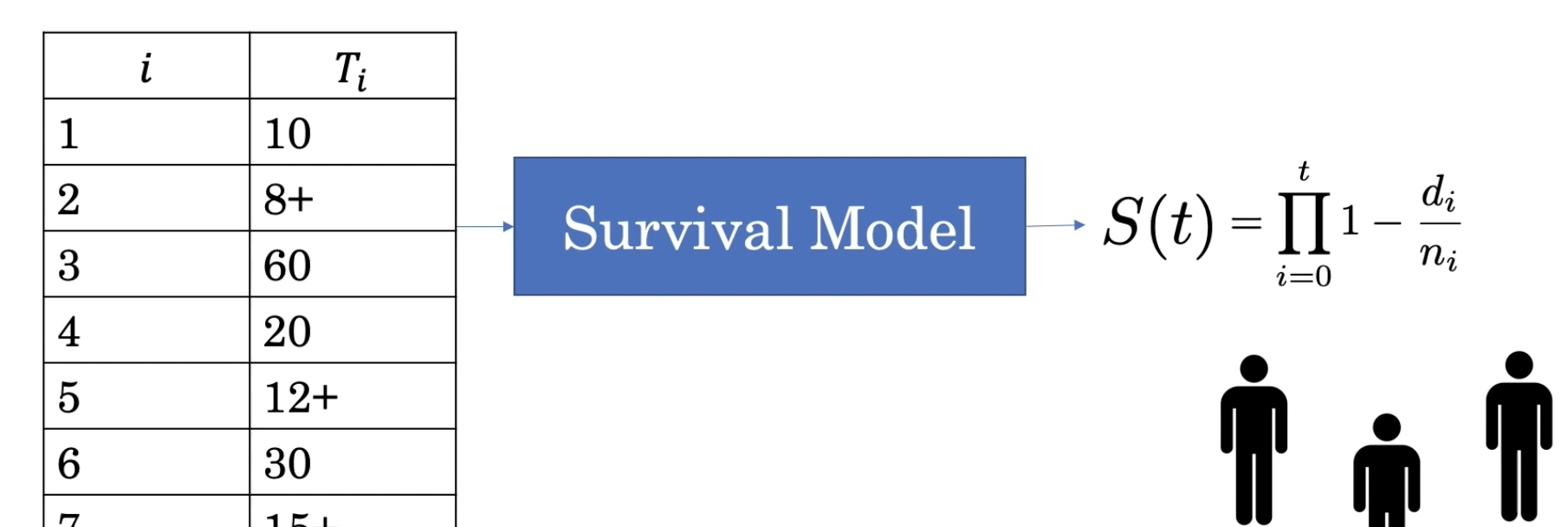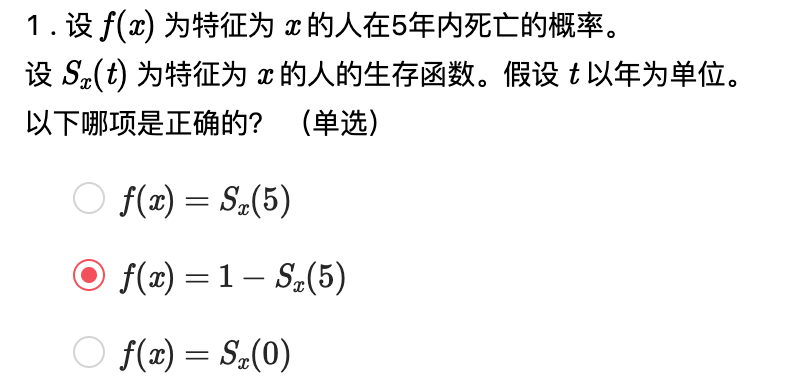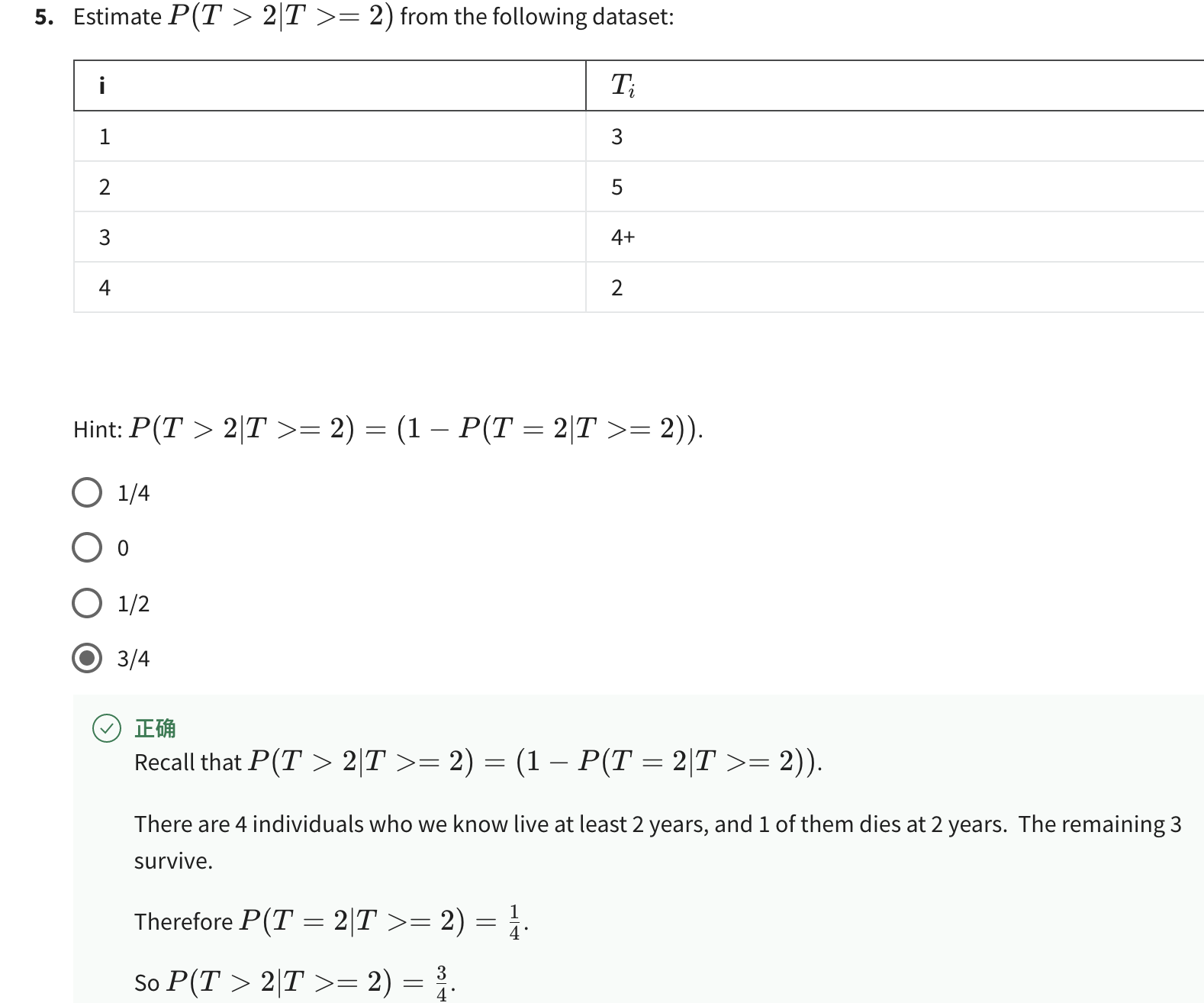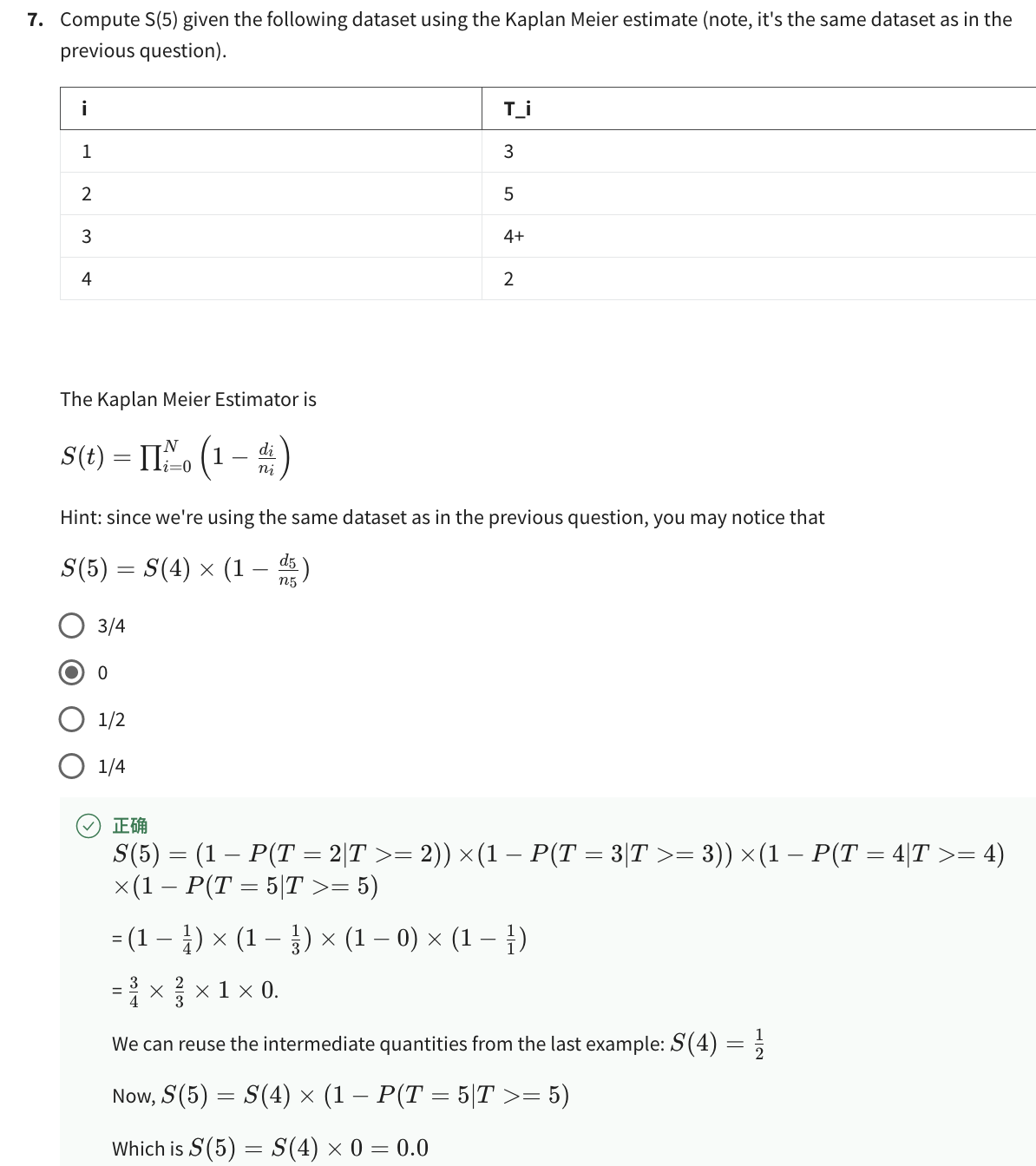Evaluation comparison

We now have a new estimate of 0.56 for survival at t=25. Now, let's compare that to the estimates we made earlier.
When we assumed that all patients died immediately at their censored time, we obtained a low survival probability of 0.29. At the other extreme, if we assume they live forever, the survival estimate is 0.71.
We also looked at what would happen if we had access to the real time of event in the data, which is usually impossible to observe, but in this hypothetical scenario we could contact the patient and find out when the event happened. We have a true estimate that can be calculated based on this, with a true probability of 0.57.
We can see that our new estimate (based on the chain rule) is much closer to the true estimate than our two extreme observations. Thus, we have learned how to estimate survival probabilities in the presence of censoring.
Now that we have learned how to estimate survival probabilities beyond 25 months in the presence of censoring, let's see how this can be generalized to any time point small t.

Here, we can express the survival probability at any time point t as a product. We could start at i and go from time zero to time t, where we would then have 1 minus the probability of event time occurring at i
We have now learned how to estimate this number directly from the data as the ratio of the number of patients who died at time i to the number of people known to be alive at time i. We can use di to abbreviate the numerator, and ni to abbreviate the denominator, which brings the expression of the survival function
: ∏ i = 0 t 1 − dini \prod_{i=0}^{t}1-{d_i\over n_i}∏i=0t1−nidi
Kaplan Meier estimate
This is the Kaplan-Meier estimate, which allows us to derive a survival function from the population. So what we've done is, we've been able to represent the population using survival data from which we've built a Kaplan-Meier survival model.

The key to this model is that the survival function we estimate applies to all patients in the population; it is not patient-specific. We can calculate Kaplan-Meier curves or survival curves for two different populations and compare them to each other.

For example, we want to know the prognosis of patients with stage 3 cancer and stage 4 cancer. We can build two independent survival functions using Kaplan-Meier estimates, and we can plot the Kaplan-Meier estimates of survival on the same graph.

Here, the estimate map of the survival rate of stage 4 is shown in orange, and the survival rate of stage 3 is shown in blue. So if you want to tell the prognosis or probability of survival of any patient in the population, we can just look up the survival probability or y value at a given time, say 50, and we will know the difference in the survival probability of patients in the two populations.
We have seen how to use Kaplan-Meier estimation to obtain survival curves. This week, we discussed the problem of survival analysis. Using survival modeling, we see how we now model survival at any time t. We examine a key feature of data in survival analysis: right censoring.
As we have seen, right censoring is a missing data problem where the time to the event is not observed because the study was terminated, or because the patient left the study before experiencing the event. We finally look at the Kaplan-Meier estimator, which takes censoring into account to estimate the survival function for the entire population.
What we have not yet studied is how to personalize estimates of patient survival by taking into account the patient's particular circumstances . Next week, we will examine strategies for building and evaluating such personalized survival prediction models.
There is a small exercise at the end of this lesson, a total of 8 questions to test the learning results












At the end of this week's study, there will be a summary review through two programming assignments
see you in next homework~~
The article is continuously updated, and you can follow the WeChat public account [Medical Image Artificial Intelligence Practical Camp] to get the latest news, a public account that focuses on cutting-edge technologies in the field of medical image processing. Adhere to what has been practiced, and lead you to do projects, play games, and write papers. All original articles provide theoretical explanations, experimental codes, and experimental data. Only practice can grow faster, pay attention to us, learn and progress together~
I'm Tina, see you in the next blog~
Working during the day and writing at night, working hard
If you think the writing is good, at the end, please like, comment, and bookmark. Or one key triple
